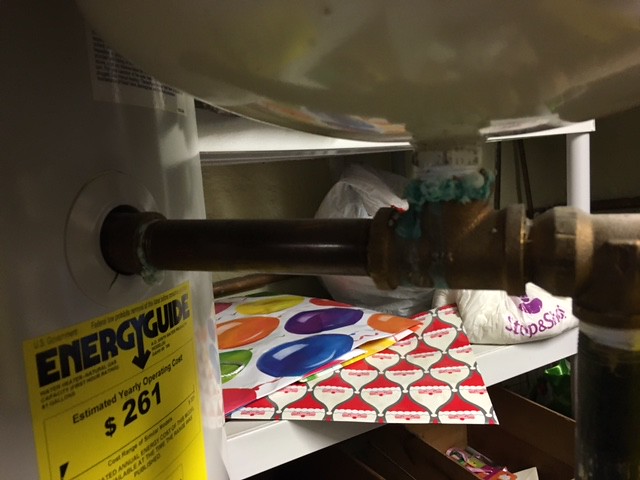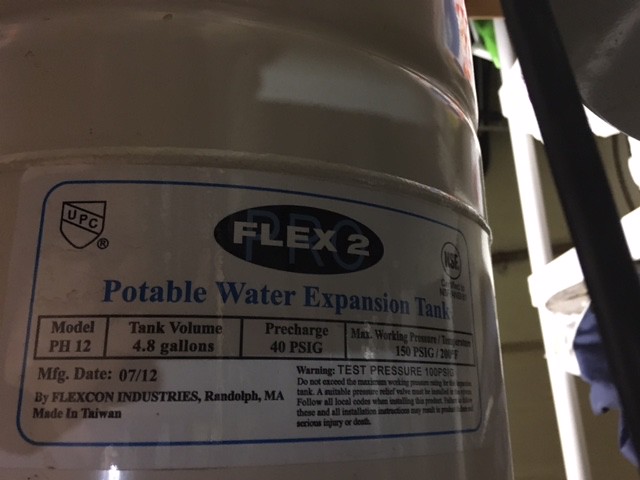Hi,
I have a 3 year old AO Smith Effex High Efficiency 50-Gallon Gas Water Heater. Right after installation the discharge pipe started leaking. Upon calling AO Smith, they send over a plumber and he explained that my town has high water pressure, so he installed an extension tank.
However, I noticed recently the pipe started leaking again, and also some sort of verdigris on the pipe where the extension tank sits.
What do you experts thinks is going on? Is this something to be concerned about? Thanks!



I have a 3 year old AO Smith Effex High Efficiency 50-Gallon Gas Water Heater. Right after installation the discharge pipe started leaking. Upon calling AO Smith, they send over a plumber and he explained that my town has high water pressure, so he installed an extension tank.
However, I noticed recently the pipe started leaking again, and also some sort of verdigris on the pipe where the extension tank sits.
What do you experts thinks is going on? Is this something to be concerned about? Thanks!




































![MEISTERFAKTUR drain snake 2.0 [50 FT] - with drill attachment - Ideal plumbing snake for sink and drain unblocking - Solid drain auger for real DYIs! (50 FT - 1/4 inch)](https://m.media-amazon.com/images/I/41VwmTiOsgL._SL500_.jpg)


















